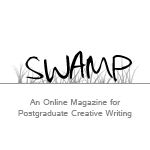On the Deconstruction of a Theory of all Ordinary Time
Excerpt from The Cuba House
Yvonne Kiddle (University of Western Australia, Australia)
.
.
I first began my juvenile thesis on The Deconstruction of All Ordinary Time when I went to live with my grandfather, Maximus de Souza at his grand house, on the banks of the Essequibo.
At this time, in Guyana, life was a series of stills from a painting by Matisse. I posed for portraits for the family album, only child that I was, whilst my parents, who were really no more than bright-plumed migratory birds in poor disguise, flew off to Venezuela, to immerse themselves in the fraught and mesmerizing business (apparently) of opening yet another of their patinated theatres of flamboyance – a Galeria de Arte, in Maracay…. Well, I knew they would be gone for months, and I, who was now eight and a half years old and a rather solemn and lonely child, would be left at the house of my only remaining grandfather (the other having died jumping out of a plane, two years before, somewhere over the poppy fields of Andalusia).
My grandfather’s house was called La Primavera, after the many-gloried painting by Sandro the Master. It was approached only by sailing across the dark and libidinous waters of the greatest of all the great rivers of Guyana – the mighty Essequibo. You boarded the sleepy long-boat at Parika, where the girls wore straw hats in the style ‘americano’ and put up their umbrellas against the sun, waving at the world as it slid by on the snake-like belly of that incredible river, which to the febrile mind of the imaginative child, most surely fed the saltant universe. You sailed for – how long? Two weeks? Three days? An hour?
To the child who has lost the Map of Time, back home in some arbitrary Shop of Clocks, the ticking, which the adult (between the tether of tight lips) will insist is so incessant, stops. Somewhere between the trees and the inceptive discourse of the river, time frays at the edges of the physicist’s blind cloth; the mystic hem unravels from the penumbral process of the sky and teaches, no less than the acquiescent mind of the grasping child.
My grandfather’s house lay at the golden turnpike of All Assumed Reality.
From the long-boat on the river, one jumped – ‘give me your hand … two, three!’ – and landed on the jetty painted yellow, like the hallowed nimbus round the sun. A statue of Ceres, Goddess of the Corn, paradoxically greeted the bemused and bleary traveler. She had stood there, at my grandfather’s jetty, for nigh on thirty years, baking slowly in the tropic sun and losing flakes of her skin of sallow ochre to the cool loquacity of the river which bled her memory down-stream and then beyond.
To the child, who is born outside of Time (and by nature, all children are), he must struggle to make this errant Architect of Nature’s Crime his own. Perhaps Time, concedes the child, is like a shining escalator, ever yielding its gleaming steps to the chance of stars. All the child has to do is to gather courage and get on, and there he is, grimly clutching at the rail of the ever-moving stairs, eyes focused with fierce determination on the Future. Time was more abstracted then, I think. I was young, and Youth would last invincibly, forever, or so it seemed, and the river, which had delivered me, like a baby to this house turned round and laughed its river-harrowed teeth, as I set off beyond the absent corn-fields of darling Ceres.
I didn’t know it then, but as I walked the fabled avenue of jungle vines to my grandfather Max’s house, there was something obscure, ill-defined – a feeling. The forming shadow, that I had left behind me that night in the Shop of Clocks, was, indeed, in deep pursuit: every hair on my head had been marked with some occult and trenchant fact of dark expiry. The man who watched the child, who would himself become the man, or so to speak, was never truly free from the lucid and evolving mind of Time – but I had something on my side, at least. I was a de Souza, nothing less – a child from the dynasty of Gods.
“This,” my paternal grandfather had told me, with a rose between his teeth, before he plunged bird-like from the plane over Andalusia, “Is the only way to die!”
And so he leapt.
And the clouds, which watched with moving consonance the bland veracity of the ground, promptly sighed and swallowed him up, long before he reached the rouge-inspired heaven of the flowers. This absent, startled gentleman had cancer gnawing at his sides, eating up the inclemency of his bowel. This, he declared, was a wholly better death, a much healthier, a far grander way to –
“- Die?” I said.
“No! Escape, my dear!” he laughed. “Holy Jesus! I’m only hopping across to the bar next door!”
Well, I got down on my child’s knees and prayed, and then I cried. And then I prayed and cried again, a dozen times.
Two years and five days later, at my grandfather Max’s house on the Other Side, in the New World of Old Guyana, I thought I heard grandfather Camilo’s voice, and that’s when I thought I’d start it, my thesis, my masterwork on The Deconstruction of a Theory of All Ordinary Time, for I had always been, would always be, a most reactionary child –
My name is Luna. Luna Seraphina de Souza-Mars. And I see angels in the dark, where the sight of Time is–
and—
I have never, ever, ever, told a lie.
.
.
Yvonne is an English HDR.Prelim/Honors student at UWA, doing a dissertation in Creative Writing. She is (slowly) working on a novel for an agency in the US. Next year she hopes to start my Ph.D, so all in all, she has much too much to do.






